DROPS Flora
Everyday comfort in alpaca and wool
from:
2.09€
per 50 g
Content: 65% Wool, 35% Alpaca
Yarn Group:
A (23 - 26 stitches)
/ 4 ply / fingering
Weight/length: 50 g = approx 210 m
Recommended needle size: 3 mm
Knitting tension: 10 x 10 cm = 24 sts x 32 rows
Care: Hand Wash, max 30°C / Dry Flat
/ Feltable
Superwash: no
Made in: Peru
Raw material origin: Wool from South America
This yarn has an Oeko-Tex® certification (certificate number 23.HPE.36896), Standard 100, Class II from the Hohenstein Institute. This means that is has been tested for harmful substances and is considered safe in human-ecological terms. Class II means the yarn is suitable to come in direct contact with the skin to a large extent, such as blouses, shirts, mattresses, etc.
Made from 65% wool and 35% superfine alpaca, DROPS Flora is a thinner version of the popular DROPS Lima - the perfect everyday, comfort yarn.
Warm, comfortable and with good shape stability DROPS Flora gives lovely results with texture and cables and well as in multi-coloured designs (the colour pairings are fantastic), like Nordic patterns, blankets and more.
Read more about our products' sustainability here
Please be aware that the colours shown may vary from screen to screen in the same way that shades may vary slightly from dye lot to dye lot.
How do I care for this yarn?

Hand Wash, max 30°C / Dry Flat
First of all, consider just airing the garment, instead of washing it. If you still desire to wash it, here are some guidelines:
- Hand wash at 30ºC - separately - with wool detergent without enzymes or optical brighteners.
- Don’t let the garment soak. Move the garment gently back and forth, do not rub or squeeze it.
- Rinse the garment until the rinse water is completely clear, making sure the water temperature stays uniform.
- Do a light centrifugation of the garment (about 800rpm), choosing a program that DOES NOT take in water at the start. Or press carefully the water out of the garment with a dry towel. The garment shouldn’t be twisted or rolled.
- To dry the garment, shape it and lay it flat - do not hang - ideally on a warm bathroom floor or on top of a drying rack in a room with good air circulation. Never dry the garment in direct sunlight.
- Don’t tumble dry.
- Never iron the garment directly. Use always a damp cloth between your steaming iron or regular iron and the garment.
Note: If you are washing a project made with this yarn combined with another, the general guideline is to follow the washing instructions for the most delicate of the yarns you are working with.
Thinking about felting this yarn?
See how this yarn looks before and after felting:
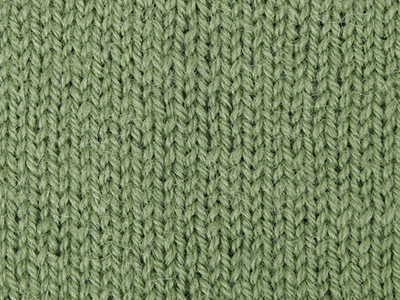
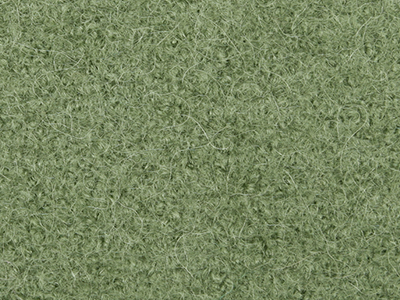
Needles: 3.00 mm
Before: 24 sts x 32 rows
After: 26 sts x 42 rows
Do you have a question about this yarn?
See a list of frequently asked questions (FAQ) about our yarns.
1) What type of fibers make the DROPS yarns?
Yarn can be made from a large number of natural and synthetic fibers. DROPS carries mainly yarns made from wool, cotton, alpaca, linen, mohair and silk. Each fiber type has its own qualities, and they are often mixed to take advantage of the best properties of each one. Coarse yarn has the advantage of being stronger and more durable, and finer fibers offer more softness and comfort. Here a bit about the main fibers we carry:
Alpaca:
Alpaca fleece is the natural fiber harvested from an alpaca, and it is similar in structure to sheep wool fiber. Its softness comes from the small diameter of the fiber, similar to merino wool. It is a soft, durable, luxurious and silky natural fiber. Yarn made from alpaca fibers does not felt or pill easily, and it can be light or heavy in weight, depending on how it is spun. While similar to sheep’s wool, it is warmer, not prickly, and has no lanolin, which makes it hypoallergenic. Alpacas come in 22 natural colors, with more than 300 shades from a true-blue black through browns-black, browns, white, silver and rose-greys.
Mohair:
This fiber comes from the Angora goats, and it's considered a luxury fiber. Mohair yarn is warm as wool, but much lighter in weight; it is durable, dyes well and does not felt easily. Mohair fibers have also a distinctive luster created by the way they reflect light. Despite being a hard fiber, mohair is usually spun into a very fluffy yarn, resulting in airy and lustrous garments.
Wool:
The wool fibers come from the skin of sheep and are relatively coarse fibers. Two striking characteristics of wool are its susceptibility to heat and its felting property, which is caused by the scales on the surface. Depending upon the breed of sheep, the appearance of the wool varies.
Wool from Merino sheep is considered the finest type of wool, having as characteristics that is finely crimped and soft. All the Merino wool in the DROPS yarns has its origins in South America, coming from sheep that have not been subject to Mulesing.
Pure new wool is wool made directly from animal fleece, and not recycled from existing wool garments.
Machine washable wool is wool treated chemically to minimize the outer fuzzy layer of the fibers, and be therefore fitable for machine wash (see Superwash).
Silk:
The silk fiber is a fine continuous fiber produced from the cocoon of a moth caterpillar known as the silkworm. While silkworm is cultivated, the wild or tussah silk is obtained from uncultivated silkworm cocoons. Silk fiber is one of the strongest natural fibers and makes a wonderful knitting yarn. It blends really well with other fibers, especially wool. Silk also dyes beautifully with natural dyes.
Vegetable fibers:
There are several varieties of vegetable fibers, found in the cell walls of plants or vegetables. Of all the varieties, two are recognized as major knitted or textile fibers. They are cotton and linen.
Cotton is the fiber surrounding the seeds in a cotton pod, and it is almost pure cellulose. Cotton is usually white in color but there are green and brown varieties as well. The cotton fiber is most often spun into yarn or thread and used to make a soft, breathable textile that is good for summer clothing and accessories, making a weaker yarn than silk or linen but stronger than wool.
Mercerized cotton is cotton that has been through a mercerization treatment. This treatment gives cotton fabrics and threads a lustrous yarn that is more lustrous than conventional cotton. It is also stronger, takes dye a little more readily, makes the yarn more resistant to mildew and reduces lint. It also may not shrink or lose its shape as much as "regular" cotton.
Linen is a fiber derived from the stalk of the flax plant that is durable and stronger than any other fiber. The linen fiber is relatively soft, straight and lustrous and becomes more beautiful with age. Linen is more comfortable to wear in hot temperatures than cotton, due to the fact that it absorbs moisture better and dries more quickly.
Other materials used in our yarns include synthetic fibers such as acrylic, viscose, polyamide (nylon) and polyester. These fibers are used mostly to give strength to a yarn (like our sock yarn, DROPS Fabel) or a special kind of structure (like our blown yarn, DROPS Air).
The polyamide fibre, commonly known as nylon, is very strong, durable, lightweight, easy to care for (can be machine washed and dried), and elastic, which makes it perfect for blending with other fibres to produce hard-wearing yarns like sock yarn.
Compared to polyester, polyamide is softer and more flexible, but it also absorbs more water and dries slower.
3) What type of information can I find on the DROPS yarn labels?
All DROPS yarn labels include information about fiber content (wool, cotton, etc.), weight in grams and ounces, length in meters and yards, washing instructions and symbols (explained here), color number, dye lot number and yarn group information.
4) What are the DROPS yarn groups?
All DROPS yarns are classified into 6 different thickness groups (A to F). Yarns in a same group have similar knitting tension/gauge, and can therefore be interchanged in patterns; however the length may be different, so when substituting always calculate the amount of meters/yards needed for the pattern to know the amount of yarn you need to get.
5) Can I use a different yarn than the one mentioned in the pattern?
Yes, as long as the yarn can be worked in the same knitting tension/gauge. Always swatch to make sure you get the same number of stitches in width and rows in height as given in the pattern.
Remember that different yarns with different textures, will give the garment different looks. The yardage/length may also be different, so when substituting always calculate the number of yards needed, in order to know the amount of yarn you need.
Read more about how to calculate the amount of an alternative yarn - and how to replace 1 thread of a yarn with 2 or more of another, here.
6) What does it mean when a yarn is “Superwash”?
A superwash wool is a special wool product that has been treated or processed in a way that allows it to be machine washable. Many people are afraid to work with wool because it is so easy to shrink (though some shrink wool on purpose) and superwash wool can allow them to work with great fibers without worry. (Read more here).
7) What does “Oeko-Tex® certified” means?
The Oeko-Tex® Standard 100 was introduced at the beginning of the 1990s as a response to the needs of the general public for textiles which posed no risk to health. The Oeko-Tex® Standard 100 is a globally uniform testing and certification system for textile raw materials, intermediate and end products at all stages of production. The test for harmful substances comprise substances which are prohibited or regulated by law, chemicals which are known to be harmful to health, and parameters which are included as a precautionary measure to safeguard health.
For more info go to www.oeko-tex.com
10) How accurate are the colours on the shade cards online?
When obtaining images for the shade card, we do our best to achieve the highest level of color accuracy. Unfortunately, we cannot guarantee how images will appear on your computer screen. Every monitor displays color differently, some colors might look darker than they really are, and some colors might be more saturated on some screens. If you experience that many of the yarn colors looks different on your screen than the actual color of the skeins, you can adjust the setting on your monitor.
11) What is a micron? What does super fine / extra fine mean?
The fineness of yarn fibers is measured in microns (thousands of millimeters). Super fine alpaca wool is 26-28 microns. Fine merino wool is less than 21.5 microns and extra fine merino is under 19.5 microns. The less microns the softer and more delicate a quality can be, the more microns the more hard wear the quality will be.
The reason why the microns in a yarn’s fibers are important is that the yarn will eventually become something else, and how delicate or coarse a yarn is will determine in part what we use it for. That’s why we recommend the softest yarns (like DROPS Baby Merino) for baby clothing, or why we choose to use a more hard wear yarn like DROPS Snow, for a seating pad or slipper.
12) Why are the colours in my skeins of print yarn different?
The reason why two skeins of a same print yarn look different can be 1) that both skeins are part of different dye lots; 2) that the skeins have been dyed using a technique called "magic print" (the one used for example in DROPS Delight), which provides unique patterns and smooth colour transitions to each skein, meaning also that within one dye lot, lighter or darker varieties might appear. This is no fault or defect, but part of the yarn's character.
13) My store doesn’t have the colour I want, what can I do?
If your DROPS store doesn’t have the yarn colour you want, try contacting a DROPS Super Store (the ones with the golden badges) - they will make sure to get a hold of the colour even if they don’t have it in stock themselves. See a list of all DROPS stores here.
14) Where can I find a specific dye lot of a colour?
Always try contacting your DROPS store first. If they do not have the dye lot you want we recommend you to ask other knitters and crocheters in the DROPS Workshop in Facebook or Ravelry, which may have the dye lot in their stash and might be willing to part from it.
Yarn sheds because there's not enough twist to hold all of the fibers together. All yarns have excess fibers (from production) that might come off as lint or shedding, in varied degrees that depend on how the yarn is spun. Brushed yarns ("hairier" yarns) like DROPS Melody, have more of these loose fibers than other yarns, and therefore shed more. Shedding also depends on what is worn under or over the garment, and whether this pulls at the yarn fibers. It’s therefore not possible to guarantee that there will be no shedding.
Below are some tips on how to get the best result when working with hairier yarns:
- When the garment is finished (before you wash it) shake it vigorously so the looser hairs come off. NOTE: do NOT use a lint roller, brush or any method that pulls at the yarn.
- Place the garment in a plastic bag and put it in your freezer - the temperature will cause the fibers to become less attached to each other, and excess fibers will come off easier. Leave in the freezer for a few hours before taking it out and shaking it again.
- Wash the garment according to the instructions on the yarn label. Garments worked with hairier yarns usually need to be shaken once dry after washing, so that the hairs rise and any excess fibers can come off.
Pilling is a natural process that happens to even the most exclusive of fibers. It's a natural sign of wear and tear that is hard to avoid, and that is most visible in high friction areas of your garment like a sweater's arms and cuffs.
You can make your garment look as new by removing the pilling, using a fabric comb or a pill/lint remover.
How can I replace this yarn?
If you are looking to replace this yarn with another DROPS yarn, you can use another yarn within the same yarn group, or try our yarn converter!
Comments / Questions (164)
![]() Yvonne Beacall wrote:
Yvonne Beacall wrote:
I purchased balls of Flora 23 Misty Forest and Flora 32 Dark Green. The stock photo for Misty Forest is completely different to the actual colour of the yarn. On the photos they look compatible to knit together when in reality they not due to Misty Forest being completely different. I have raised the point with the selling website but have not answered. I have looked at other websites and they all have the same stock photo so the error appears to be at your end.
23.05.2024 - 10:33DROPS Design answered:
Dear Mrs Beacall, please be aware that the colours shown may vary from screen to screen in the same way that shades may vary slightly from dye lot to dye lot.Thanks for your comprehension. Happy knitting!
24.05.2024 kl. 08:39
![]() Sandra Laird wrote:
Sandra Laird wrote:
Hi, a pattern I'd like to make for a crocheted blanket uses drops safran but I would like to use drops flora. My problem is finding a match for the safran mint colour. Could I use an alternative from Nord or other yarn? If yes, could you please recommend best match? Thank you.
11.03.2024 - 13:03DROPS Design answered:
Dear Mrs Laird, you can also combine different yarn from yarn group A - for any help choosing the best matching colour, please feel free to contact your DROPS store, they will help you even by mail or telephone. Happy crocheting!
11.03.2024 kl. 15:41
![]() Christina Hansen wrote:
Christina Hansen wrote:
Hej Drops Design Hvis man bruger 2 tråde Flora, hvilken strikkefasthed får man så? Og hvilken pindestørrelse? På forhånd tak
18.02.2024 - 23:15DROPS Design answered:
Hei Christina. DROPS Flora tilhører garngruppe A. Bruker man 2 tråder fra garngruppe A tilsvarer dette garngruppe C (A+A=C). Pinne str. er kun veiledene, man må bruke den strikkepinne str. som vil gi den strikkefastheten som er oppgitt i den oppskriften man skal strikke. mvh DROPS Design
26.02.2024 kl. 09:53
![]() Gitte Bech wrote:
Gitte Bech wrote:
Får man ikke svar på spørgsmål ???????
02.02.2024 - 06:26
![]() Gitte Bech wrote:
Gitte Bech wrote:
Jeg forstår ikke hvorfor I ikke har flere farver af Flora, Lima og Nepal. F.eks har i EN farve i lilla i Flora.. EN gul i Lima osv. Hver gang der er nye farver, forsvinder der nogle af de gamle :( . Der mangler graduering i farverne og det er en skam, da det er virkelig gode garner
25.01.2024 - 06:31
![]() Manuela wrote:
Manuela wrote:
Liebes Dropsteam, ich möchte gern wissen, welche Farben auf dem ersten Bild bei euch abgebildet sind? Vielen Dank!
16.11.2023 - 13:08DROPS Design answered:
Liebe Manuela, auf dem 1. Foto sieht man Farben Nr 30-31-32. Viel Spaß beim stricken!
17.11.2023 kl. 15:29
![]() Maureen Stewart wrote:
Maureen Stewart wrote:
I purchased the red colour and it is more like a dusty brick. I am not happy with it but due to time constraints I will have to use it
30.07.2023 - 22:45
![]() Antje wrote:
Antje wrote:
I really love DROPS Nord and Flora, my favourite yarns for multiple projects. But unfortunately my favourite colours are not available - deep violet and dark denim mix. Is there a chance that these colours might be added?
07.05.2023 - 11:11DROPS Design answered:
Dear Antje, each season we tend to release new colours in some of our yarns, as trends change. We have no knowledge of which colours will be added next season.
07.05.2023 kl. 12:57
![]() Claudine LE DERF wrote:
Claudine LE DERF wrote:
Bonjour, Pour tricoter un pull peut-on associer la Flora vert perroquet (27) avec la Kid-silk vert perroquet (48) ? Si oui avec quelle aiguille pour tricoter ces 2 fils en même temps ? Et combien de pelotes de chacune de ces 2 laines : pull taille S (36) manches longues, col rond, en point de riz. D'avance merci de votre réponse par mail. D'avance merci de v
14.02.2023 - 16:35DROPS Design answered:
Bonjour Mme Le Derf, tout à fait, vous pouvez associer ces 2 couleurs ensemble. Lorsque l'on tricote Flora et Kid-Silk ensemble, on obtient en général une tension de 17-16 mailles - retrouvez des exemples de modèles ici, ajoutez des filtres si besoin ou retirez celui ajouté pour Flora - en fonction de la forme (de l'aisance) , la quantité pourra varier. Votre magasin saura vous aider si besoin, même par mail ou téléphone. Bon tricot!
14.02.2023 kl. 18:10
![]() Pernille Larsen wrote:
Pernille Larsen wrote:
Dejligt med nye farver. Ønsker mig en vinrød eller rødmeleret, ja faktisk alle farverne fra Drops Alpaca, da jeg er lige lidt mere vild med Flora
07.11.2022 - 22:02
![]() Kerstin wrote:
Kerstin wrote:
Hallo, ich möchte gerne die Wolle Nord Jeans blau gegen Flora jeans blau tauschen. Können Sie mir sagen ob die Farben identisch sind? Grüße Kerstin
30.09.2022 - 12:36DROPS Design answered:
Liebe Kerstin, wenden Sie sich bitte direkt an Ihrem DROPS Händler, dort wird man die besten passenden Farben auch per Telefon oder per E-Mail empfehlen. Viel Spaß beim stricken!
03.10.2022 kl. 10:29
![]() Jana Drvotová wrote:
Jana Drvotová wrote:
Dobrý den, mohu přízi Drops Flora použít na svetřík pro 6i měsíční miminko? Nekouše? Děkuji za Vaši odpověď Drvotová Jana
24.07.2022 - 20:09DROPS Design answered:
Dobrý den, Jano, toto je velmi subjektivní - DROPS Flora patří k jemným vlněným přízím a na svetříky pro miminka se běžně s oblibou používá. Hodně zdaru! Hana
30.10.2022 kl. 08:53
![]() Martin wrote:
Martin wrote:
Bonjour, est-ce que la laine Flora est certifiée Oeko-Tex ? Si non,. pour quelle raison ? Est-elle utilisable pour les bébés quand même ? Je vous remercie.
17.05.2022 - 16:41DROPS Design answered:
Bonjour Mme Martin, notre producteur n'a pas encore la certification mais y travaille, retrouvez tous les modèles bébé tricotés en Flora ici. Bon tricot!
18.05.2022 kl. 14:17
![]() Cindy wrote:
Cindy wrote:
Can I weave this yarn
05.05.2022 - 07:03
![]() Ineke Riedijk wrote:
Ineke Riedijk wrote:
Goedemiddag, Ik lees veel over de nare manieren waarop wol geschoren wordt bij angora, mohair, alpaca enz. Kopen jullie alleen wol in die op diervriendelijke wijze verkregen word? Met vriendelijke groet, Ineke Riedijk
04.04.2022 - 15:12DROPS Design answered:
Dag Ineke,
DROPS werkt samen met de grootste en serieuze producenten die diervriendelijkheid uiterst serieus nemen en de EU-regelgeving en wetten volgen. Meer over duurzaamheid en diervriendelijkheid vind je via deze link (Tekst staat helaas nog in het Engels)
07.04.2022 kl. 23:19
![]() Sylvie Renou wrote:
Sylvie Renou wrote:
Bonjour, hier je vous ai demandé quel bleu de Flora se rapprochait le plus du bleu de Camelia mais au lieu de me répondre, vous me renvoyez la page sur Flora que je connais déjà, qui plus est en anglais. Merci de répondre enfin à ma question.
25.03.2022 - 09:35DROPS Design answered:
Bonjour Mme Renou, pour vous aider à trouver la couleur exacte en Flora correspondant à vos envies, n'hésitez pas à contacter directement votre magasin, on pourra vous conseiller, même par mail ou téléphone. Merci pour votre compréhension. Bon tricot!
28.03.2022 kl. 10:59
![]() Sylvie Renou wrote:
Sylvie Renou wrote:
Bonjour, je souhaite tricoter votre modèle " Pull de Noël DROPS avec jacquard Bonhomme de neige", en drops CAMELIA. Ce fil n'étant plus disponible, je souhaite le remplacer par le fil FLORA mais j'hésite au niveau des couleurs, du bleu en particulier. Que me conseillez-vous pour rester au plus près du modèle ? En vous remerciant par avance!
24.03.2022 - 18:30DROPS Design answered:
Bonjour Mme Renou, n'hésitez pas à contacter (même par mail ou téléphone) votre magasin DROPS, on pourra là-bas vous aider plus facilement à choisir les couleurs dans les nuances que vous souhaitez en fonction des possibilités; Bon tricot!
25.03.2022 kl. 08:10
![]() Olga Nese wrote:
Olga Nese wrote:
Kan eg få bekjed på epost når de har fått drops Flora garn unicolor farge 10 på lager eg skulle hatt 6stk. nøstwer.takk
08.03.2022 - 22:52DROPS Design answered:
Hei Olga. Vi har dessverre ikke mulighet til å gi beskjed til alle privat personer når en kvalitet/farge ankommer vårt lager. Vi venter den inn på hovedlagret i uke 11 eller 12. mvh DROPS Design
14.03.2022 kl. 08:42
![]() AnnieP wrote:
AnnieP wrote:
Entre Flora et Nord laquelle est la plus douce sur la peau ? Merci pour vos commentaires.
03.03.2022 - 18:00DROPS Design answered:
Bonjour AnnieP, pour toute assistance au choix d'une laine (chaque sensibilité étant différente), contactez votre magasin DROPS, on pourra vous répondre, même par mail ou téléphone. Bon tricot!
04.03.2022 kl. 11:30
![]() Labrosse wrote:
Labrosse wrote:
Bonjour. Comment peut on savoir rapidement la quantité nécessaire (approximative bien sûr) qu’il faut pour un pull femme, homme ou enfant ? Je n’arrive pas à repérer cette information, sauf si bien sûr j’ouvre un modèle. Merci de votre reponse
04.02.2022 - 16:10DROPS Design answered:
Bonjour Mme Labrosse, en fait, la quantité va dépendre de la taille, de la forme, du point employé, de l'échantillon/de la texture, etc.. et même si éventuellement vous le tricotez avec une autre laine ou pas ; l'idéal est donc plutôt de regarder parmi tous les modèles en Flora en utilisant les filtres adaptés, ou bien même tous ceux du tricotés avec une laine du groupe A (utilisez alors le convertisseur). Bon tricot!
04.02.2022 kl. 16:17
![]() Chartier wrote:
Chartier wrote:
Je dois utiliser la laine floraet la laine kid - silk, pour un pull top down pull raglan. J'aimerais trouver le modèle de pull correspondant, est-ce possible, je vais suvre une vidéo (le Monde de Line) se serait plus facile pour les tailles . Merci
08.01.2022 - 12:09DROPS Design answered:
Bonjour Mme Chartier, vous trouverez ici tous nos modèles tricotés en DROPS Flora dont certains avec Kid-Silk. Bon tricot!
10.01.2022 kl. 09:43
![]() Patrizia Merlini wrote:
Patrizia Merlini wrote:
Buongiorno ho una macchina da maglieria titolo 5 e vorrei fare una tuta sportiva con FLORA ma il mio fornitore (dilanaedaltrestorie) abituale di lana Drops non sa se va bene a macchina, poi mancano i colori, da più di un mese, potete aiutarmi. Me ne occorrono credo 30/40gomitoli sulla tonalità dei beige/nocciola, e se la scelta flora va bene per il mio progetto, grazie
06.01.2022 - 14:13DROPS Design answered:
Buongiorno Patrizia, i filati DROPS possono essere utilizzati con le macchine da maglieria: in ogni caso provi a fare un campione. Per l'ordine, deve comunque rivolgersi ai rivenditori DROPS. Buon lavoro!
08.01.2022 kl. 13:40
![]() Patrizia Merlini wrote:
Patrizia Merlini wrote:
Buongiorno ho una macchina da maglieria titolo 5 e vorrei fare una tuta sportiva con FLORA ma il mio fornitore (dilanaedaltrestorie) abituale di lana Drops non sa se va bene a macchina, poi mancano i colori, da più di un mese, potete aiutarmi. Me ne occorrono credo 30/40gomitoli sulla tonalità dei beige/nocciola, e se la scelta flora va bene per il mio progetto, grazie
06.01.2022 - 14:12DROPS Design answered:
Buongiorno Patrizia, i filati DROPS possono essere utilizzati con le macchine da maglieria: in ogni caso provi a fare un campione. Per l'ordine, deve comunque rivolgersi ai rivenditori DROPS. Buon lavoro!
08.01.2022 kl. 13:41
![]() Bjørg Andersen wrote:
Bjørg Andersen wrote:
Hei lurte på om dere har Drops Flora uni colour farge 21 og parti 498613? Skulle hatt 4 nøster.
04.01.2022 - 11:24DROPS Design answered:
Hei Bjørg. Vi selger bare kilovis til butikker. Men ta kontakt med din butikk / en nettbutikk og hør om de har denne innfargingen. Ellers så anbefaler jeg deg å bruke diverse sosiale medier for håndarbeid (f.eks DROPS Workshop), der er det mange brukere som hjelper hverandre med etterlysning av garn og partinr. mvh DROPS Design
14.01.2022 kl. 08:54






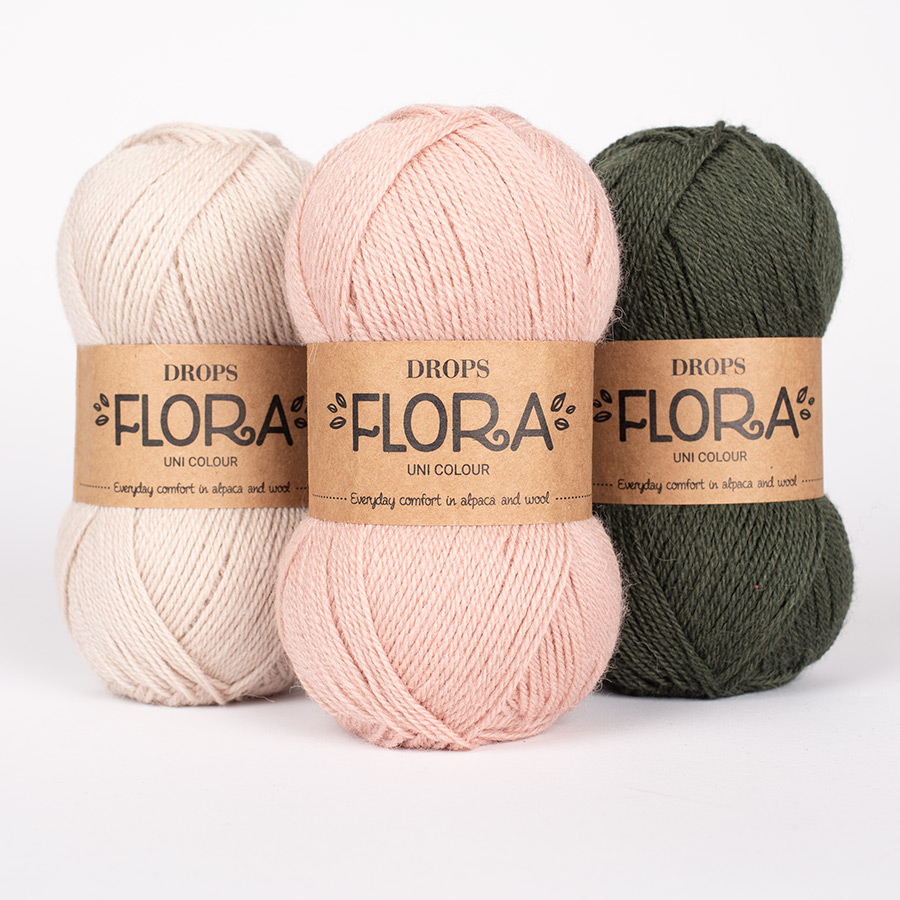
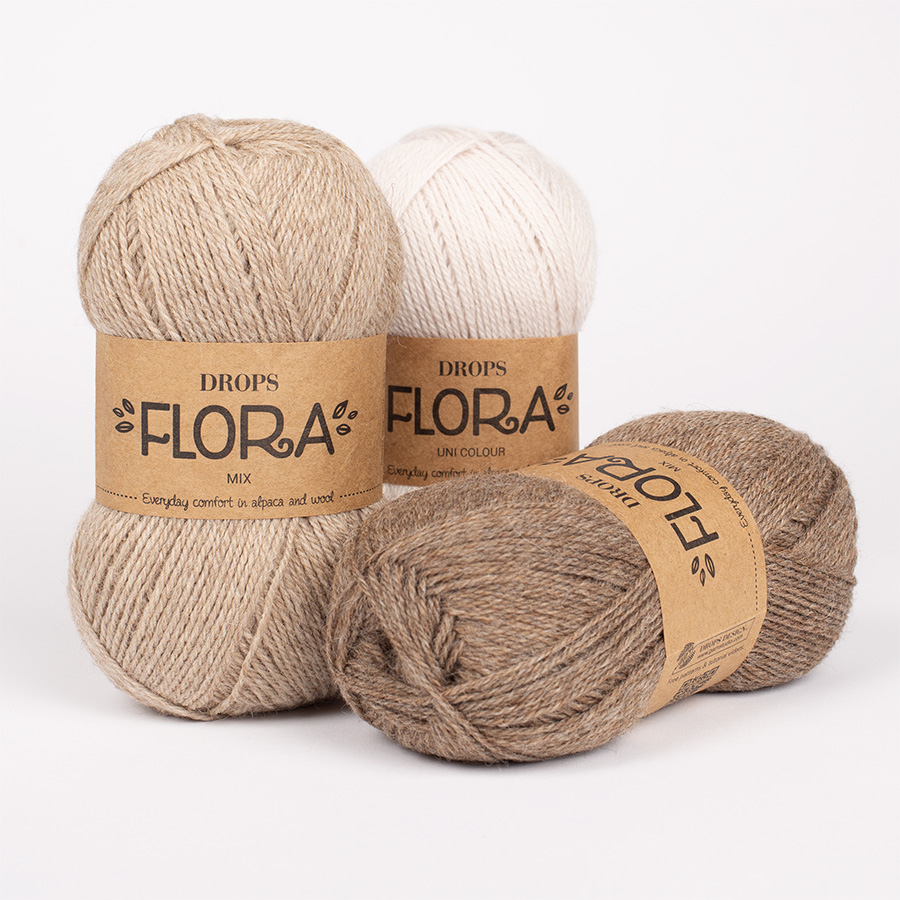
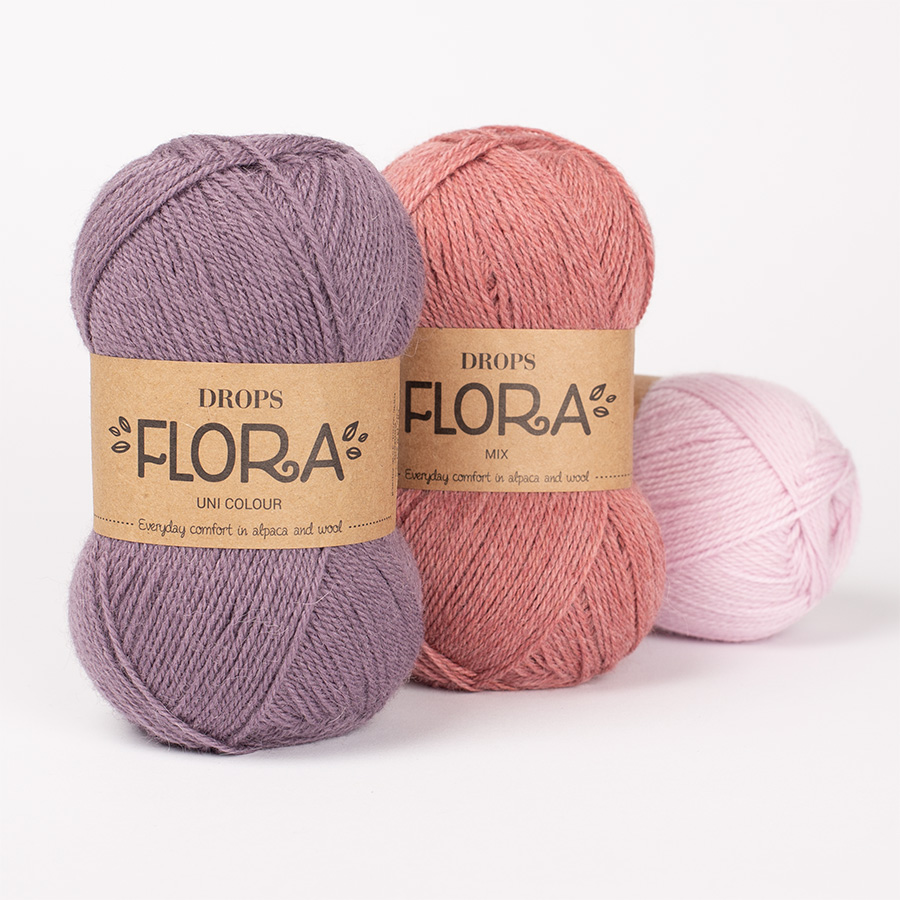

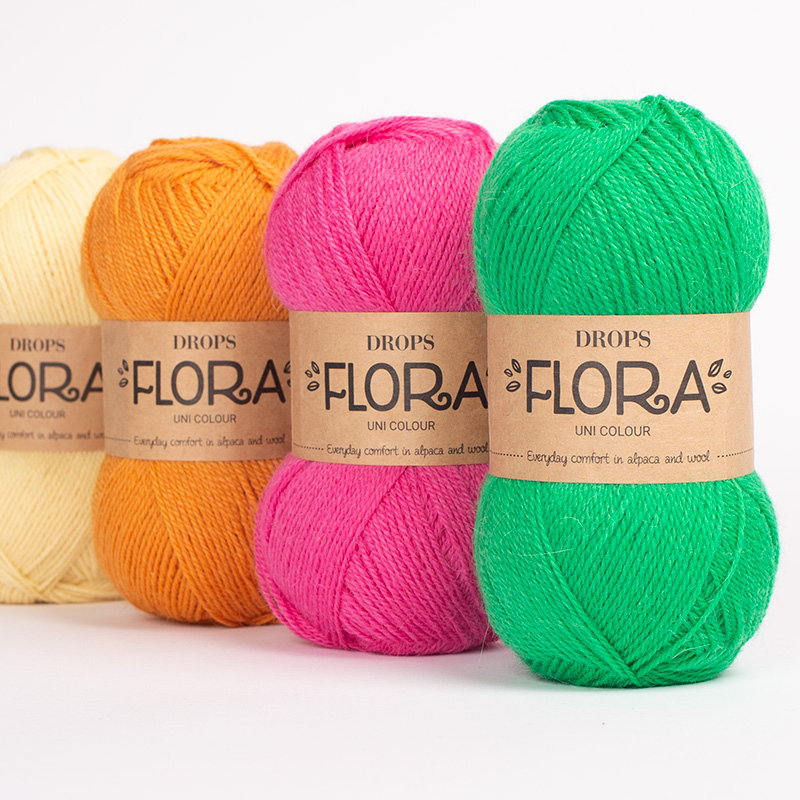


















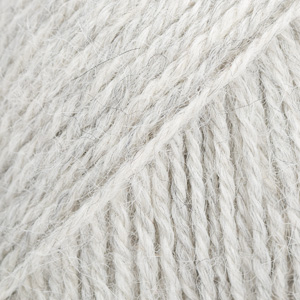










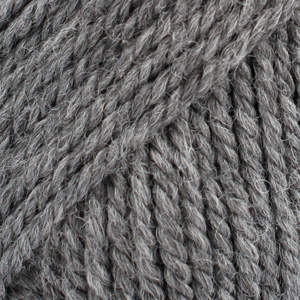















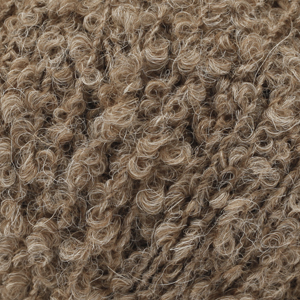












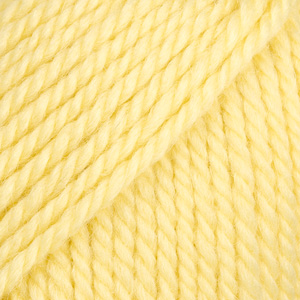




























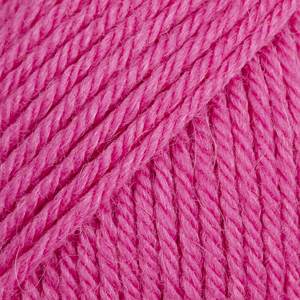






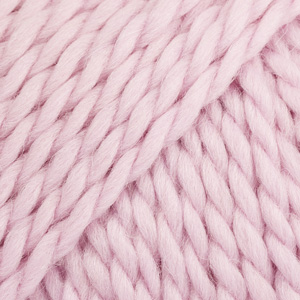









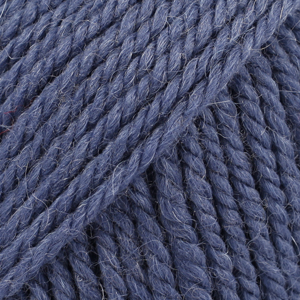






















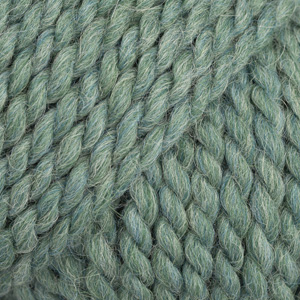


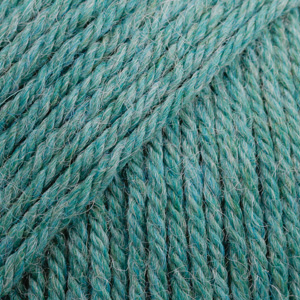







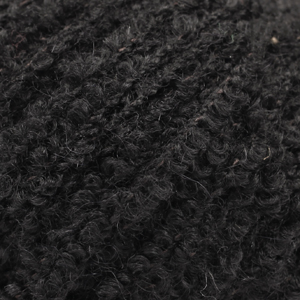

















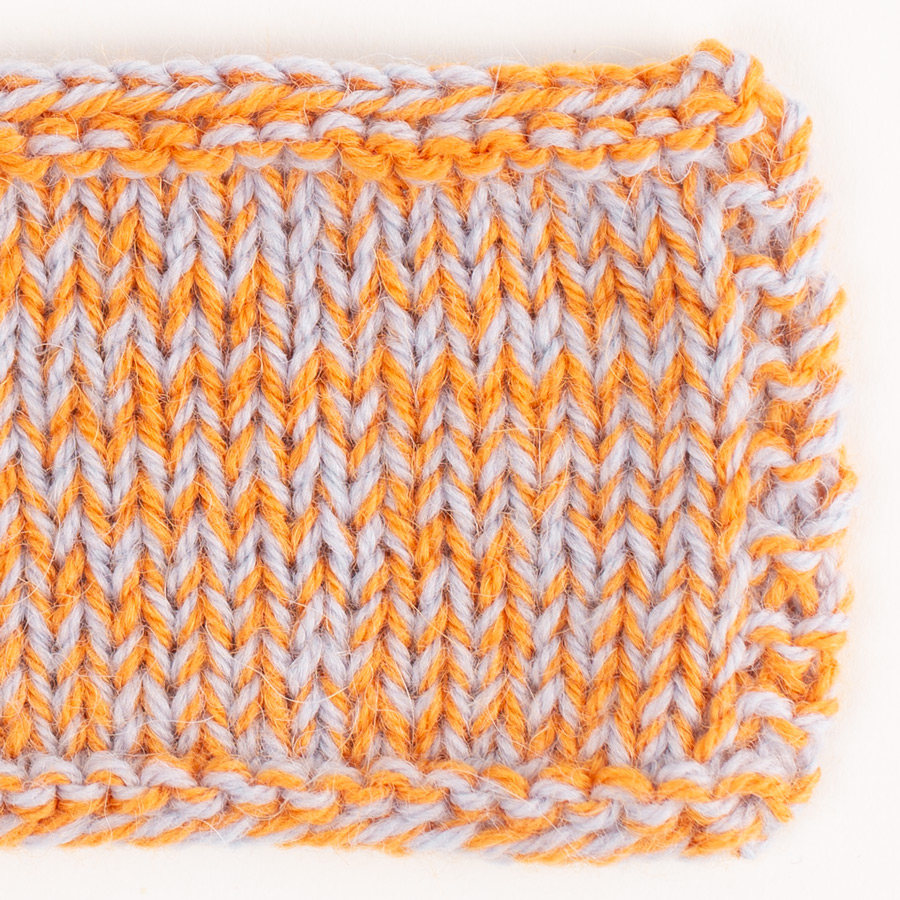
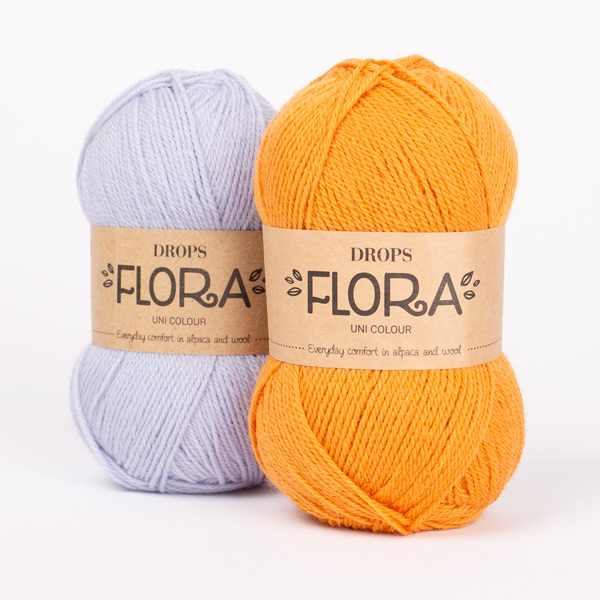
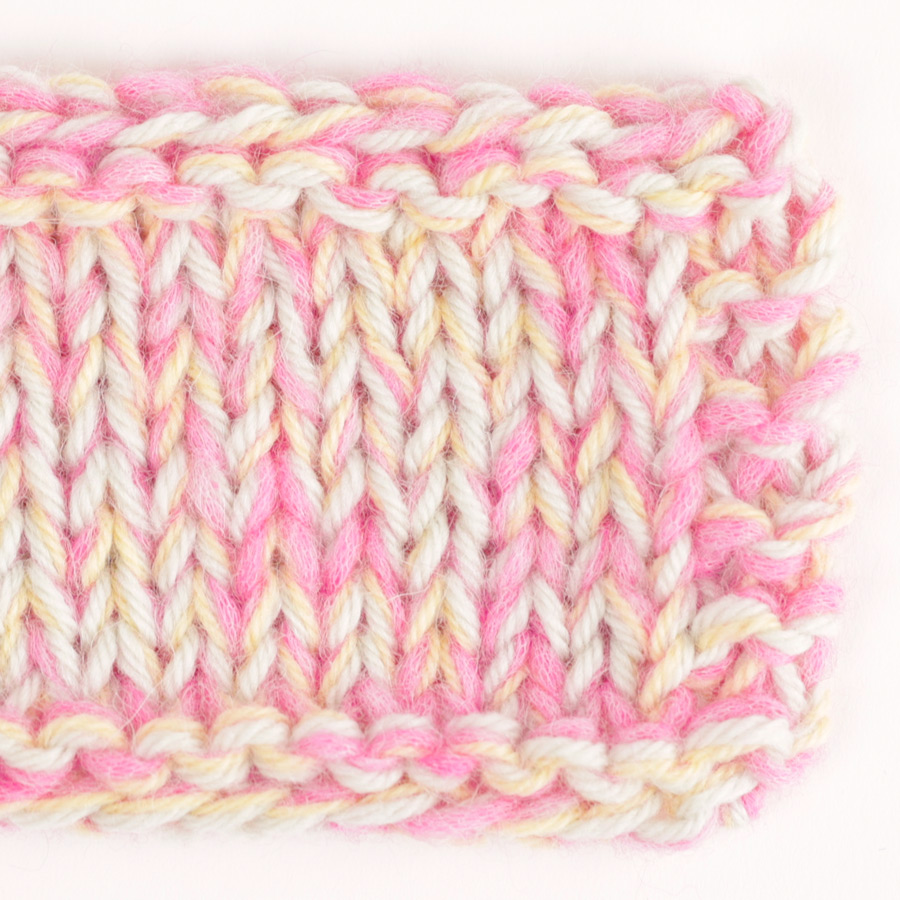
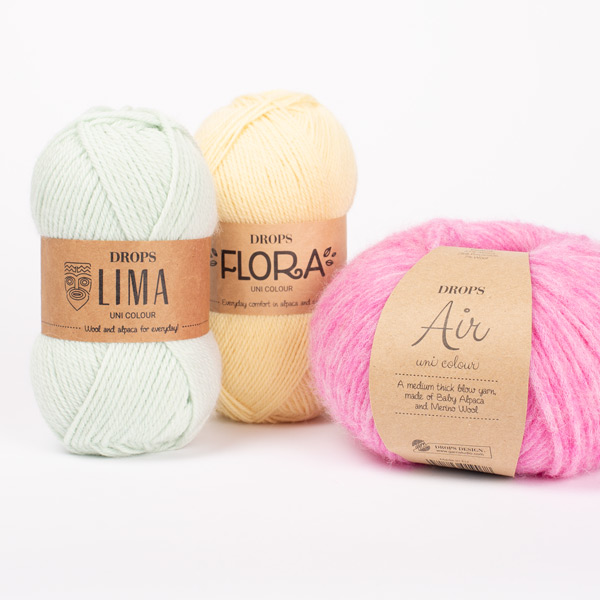
















As explained in my question the fault is not with screen. Its a pity I cannot upload a photo showing the exact difference. The ball is totally different to your stock photo. Its your stock photo that is wrong it is not a true representation of the yarn colour. I sent your stockist a photo to prove and has also ignored my question. Why don't you get a ball of Misty Forest and compare it to the photo probably because I would be proved right.
24.05.2024 - 10:09